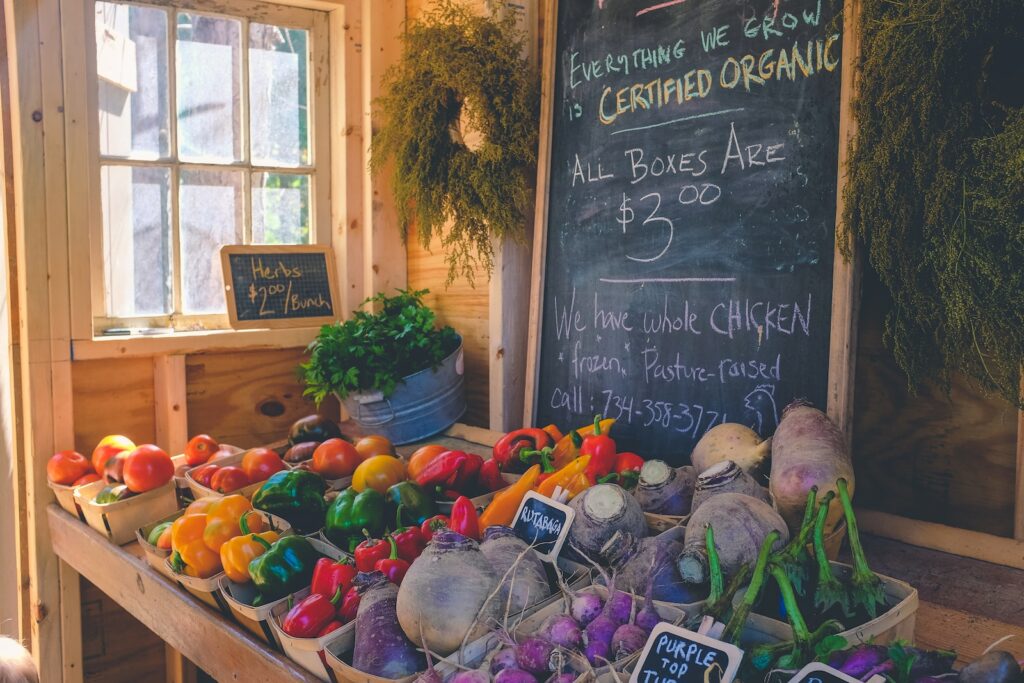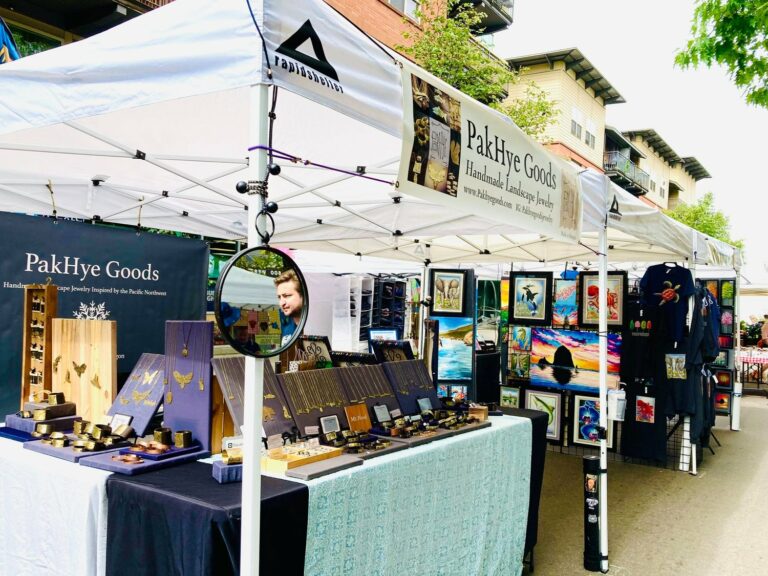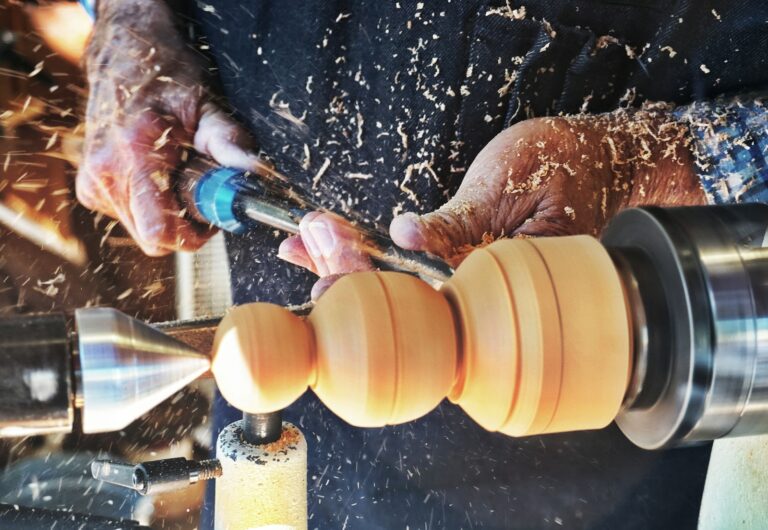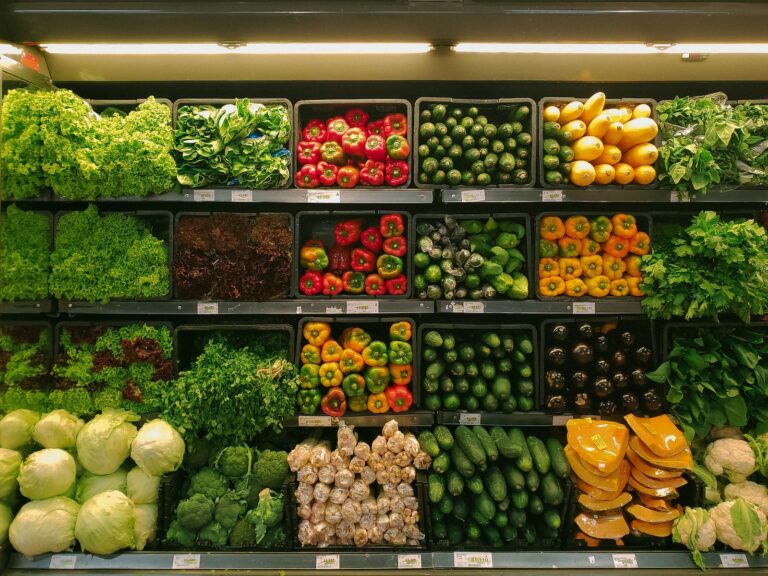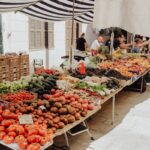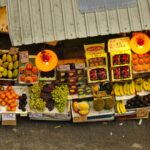If you’re getting ready for a visit to your local farmers’ market, being prepared is key. With so much fresh produce and unique artisanal products on offer, it can be easy to get overwhelmed.
That’s why I’ve put together this handy Farmers’ Market Supplies Checklist to help you make the most out of your shopping trip.
Table of Contents
Essential Farmers’ Market Supplies
As a regular vendor in farmers’ markets, packing the right supplies is essential for a successful market day. To ensure a stress-free selling experience, here’s a checklist of must-have items:
1. Tent and Weights
Setting up a tent is crucial for providing shade on hot summer days and keeping the rain off your products during wet weather.
However, you will also need to pack the appropriate weights to anchor the tent and prevent it from flying away or collapsing.
Depending on the weather conditions in your area, weights ranging between 25 and 40 pounds are suitable for securing a tent.
2. Table
Table(s) are handy for displaying your farm produce and other items for sale. Consider purchasing lightweight, foldable tables for easy transportation and storage.
3. Money and Sales Equipment
Bring change and cash to make transactions more comfortable for both you and the customer. Credit card machines, POS systems, and mobile payment options are an added advantage as they make handling transactions more manageable.
4. Signage
Eye-catching signs displaying your farm name and product offerings will attract potential customers and increase your sales. Be sure to include prices and any relevant product information on your signs.
5. Packaging Material
Packaging materials like bags, boxes, and containers will help to keep your products clean and organized. Purchase bags made of recyclable or biodegradable materials that align with sustainability goals.
6. Cooler(s)
Coolers are essential for storing perishable produce and ensuring they remain fresh until they’re sold. It’s ideal to pack enough coolers to separate fruits, vegetables, flowers, and animal products.
7. Cleaning Supplies
Packing cleaning supplies like rags, paper towels, and sanitizers are crucial to ensure the cleanliness of your table and products throughout the day. These items are also handy for spills and general cleanup.
By considering the essentials above, vendors can have a successful farmers’ market experience with increased sales, enhanced exposure, and satisfied customers.

Preparing for Your Farmers’ Market Trip
Before heading out to your local farmers’ market, it’s essential to prepare a checklist of the necessary supplies you’ll need to make the most out of your trip. Here’s my farmers’ market supplies checklist to help you get started:
- Reusable Bags: Bring along enough sturdy, reusable bags to hold all your purchases. This way, you can avoid using single-use plastic bags and promote eco-friendly practices.
- Cash and Cards: Some farmers’ markets may not accept credit cards, so make sure to bring cash as well. Keep your cards and cash secure in a wallet that you can easily carry.
- Cooler and Ice Packs: To keep your perishable items fresh, it’s crucial to bring a cooler and ice packs. This will come in handy if you plan on buying meat, dairy, or other refrigerated products.
- Sun Protection: You’ll be out in the sun for a while, so it’s essential to protect yourself from harmful UV rays. Bring a hat, sunglasses, and wear sunscreen to avoid sunburn.
- Water Bottle: As you explore the farmers’ market, it’s easy to get dehydrated. Bring a reusable water bottle filled with water to stay hydrated and energized on your journey.
- Comfortable Shoes: Farmers’ markets are usually held outdoors on uneven terrain. Wearing comfortable shoes, such as sneakers or sandals, will keep your feet comfortable and allow you to walk around with ease.
By checking off these items on your farmers’ market supplies checklist, you’ll be sure to have a successful trip.
Remember to have fun, try new foods, and support your local farmers and vendors.
Bags and Containers
When it comes to shopping at the farmers’ market, having the right bags and containers is key to making sure your fresh produce stays safe and secure on the trip back home.
Here are a few must-have items to add to your Farmers’ Market Supplies Checklist in the category of Bags and Containers:
1. Reusable Tote Bags
Purchasing a few reusable tote bags is an environmentally friendly and practical option for carrying your produce.
Look for bags that are made from sturdy material such as cotton or canvas and can easily be washed and reused.
These bags come in various colors and sizes and can be used for carrying a range of produce, from leafy greens to root vegetables and even fresh-cut flowers.
2. Mesh Produce Bags
Mesh produce bags are lightweight and breathable, making them perfect for carrying delicate produce such as berries, mushrooms or herbs.
These bags often come in different sizes, small ones for berries and large ones for leafy greens, carrots, and cucumbers.
3. Insulated Coolers
If you are planning to buy fresh meat, or dairy products, or require cold produce and live a good distance away from the farmer’s market, an insulated cooler will come in handy.
Insulated coolers keep your perishable items cold and preserved. Get coolers with wheels for convenient transportation from the market to your vehicle.
4. Glass Jars
If you’re buying honey, jam, or anything liquid-like, consider bringing along a few glass jars. These work especially well for items with wide mouths and can be reused multiple times.
5. Large Plastic Containers
If you’re buying produce in large quantities or if you’re planning to take some items along for a picnic, consider purchasing a few large plastic containers with lids. These are perfect for fruits like strawberries, blueberries, and cherries.
By stocking up on these essential Farmers’ Market Supplies Checklist items for bags and containers, you’ll be able to shop with ease, keep your produce safe, and minimize waste while supporting local farmers.
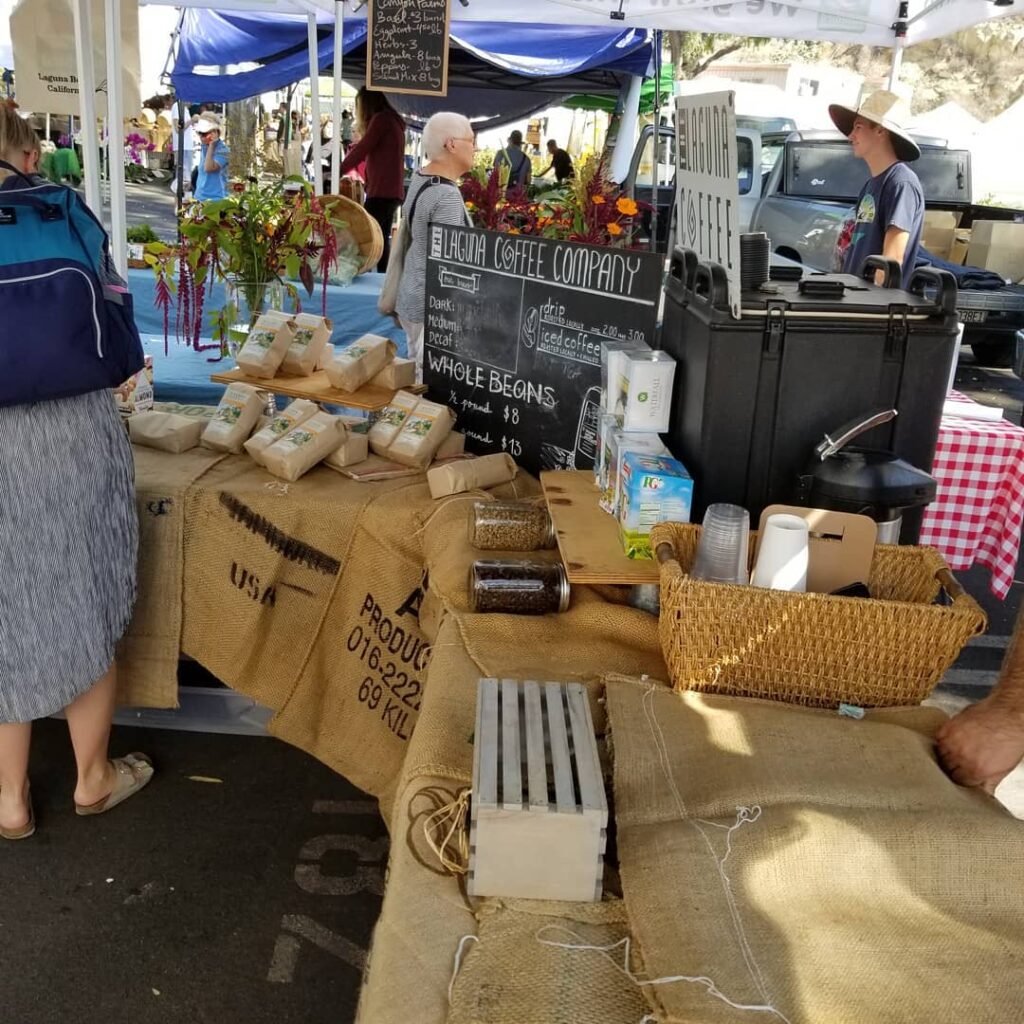
Cash and Payment Options
When it comes to purchasing goods at a farmers’ market, cash is king.
Vendors in these markets often operate on a cash-only basis, so it’s essential to bring enough money to cover your purchases.
Before heading to the market, I always make sure to visit an ATM and withdraw enough cash.
However, in recent years, farmers’ markets have started accepting debit and credit card payments.
This option can be convenient, especially for those who don’t like carrying cash.
It’s important to note that not all vendors accept card payments, so always be prepared with cash as a backup.
Another option to consider is using a mobile payment app, such as Apple Pay or Google Pay.
More and more farmers’ markets are adopting this payment method, which can be a quick and easy way to pay for your purchases.
Just make sure that the vendor accepts mobile payments before attempting to use this method.
In addition to cash, debit, credit cards, and mobile payments, some farmers’ markets also accept Supplemental Nutrition Assistance Program (SNAP) benefits.
The US Department of Agriculture has implemented a nationwide program called the Supplemental Nutrition Assistance Program (SNAP), which provides nutrition assistance to low-income individuals and families.
Many farmers’ markets now accept SNAP benefits, making fresh, locally-grown produce more accessible to low-income individuals and families.
Payment Options Summary:
- Cash is the most widely accepted payment method at farmers’ markets.
- Debit and credit card payments are becoming more common, but not all vendors accept this option.
- Mobile payment apps such as Apple Pay or Google Pay can also be used if accepted by the vendors.
- Some farmers’ markets accept SNAP benefits, providing access to fresh produce for low-income individuals and families.
Make sure to check the payment options available at your local farmers’ market, and be prepared to use the payment method that will work best for you. Don’t let payment options discourage you from attending your local farmers’ market and enjoying all the fresh, locally-grown produce it has to offer.
Weather Protection
When shopping at a farmer’s market, it’s important to come equipped for whatever weather comes your way. Weather conditions can change quickly, so it’s important to prepare for all possibilities. Here are a few items to consider bringing with you:
- Sunscreen: Protecting your skin from the sun’s harmful rays is crucial when spending time outdoors. Be sure to apply sunscreen before leaving for the market, and reapply regularly throughout the day.
- Hat: A wide-brimmed hat can help shield your face and neck from the sun. Look for hats made from breathable materials like cotton or linen to help keep you cool.
- Sunglasses: Protecting your eyes from the sun is just as important as protecting your skin. Look for sunglasses that block both UVA and UVB rays.
- Umbrella: An umbrella doesn’t just protect you from rain, it can also provide shade from the sun. Choose a compact, lightweight design that’s easy to carry with you.
- Rain Gear: Be prepared for unexpected rain showers by bringing a waterproof jacket or poncho. A foldable rain hat or umbrella can also come in handy.
- Cooling Towel: If you’re shopping on a hot day, a cooling towel can help keep you comfortable. These towels are designed to stay cool for hours and can be used to wipe away sweat.
By coming prepared for the weather, you can ensure that your trip to the farmers’ market is enjoyable and stress-free. Don’t forget to pack these essential items before heading out!
Display and Signage
Display and signage are critical elements that can differentiate one farmers’ market vendor from another. When planning for an eye-catching display, vendors should keep in mind the following:
- Use professionally made signs: Well-designed signs are essential as they convey the vendor’s brand and product information to potential customers. Professional signs are made of durable materials, easy to read, and not busy – customers should be able to get the message in a glance.
- Arrange products in an orderly manner: An orderly display of products on the table is a simple yet important factor in attracting buyers. Try grouping related products such as fruits, vegetables, and herbs together. Use color and height to create a visually appealing display.
- Add a personal touch: Personal touches such as handwritten chalk or marker signs add a human feel to the display, setting it apart from the rest. Additionally, vendors can use a unique banner or tablecloth that matches their brand’s colors.
- Have adequate lighting: Some farmers’ markets take place early in the morning or late in the evening, where lighting can be poor. Adequate lighting ensures that customers can see the products clearly.
- Emphasize quality and freshness: Indicate the freshness of the produce by putting up signs that show the harvest date or the farm where the products are from. This adds credibility and trust to the customer.
- Comply with local regulations: Check with the farmers’ market manager to ensure compliance with local signage regulations. Some markets have restrictions on the size, materials, and placement of signs.
Attention to detail in display and signage is vital for farmer’s market vendors as it can increase the volume of traffic to their stalls and, ultimately, positively impact sales. A well-designed, personalized, and organized display can communicate the unique value of the vendor’s brand and products.
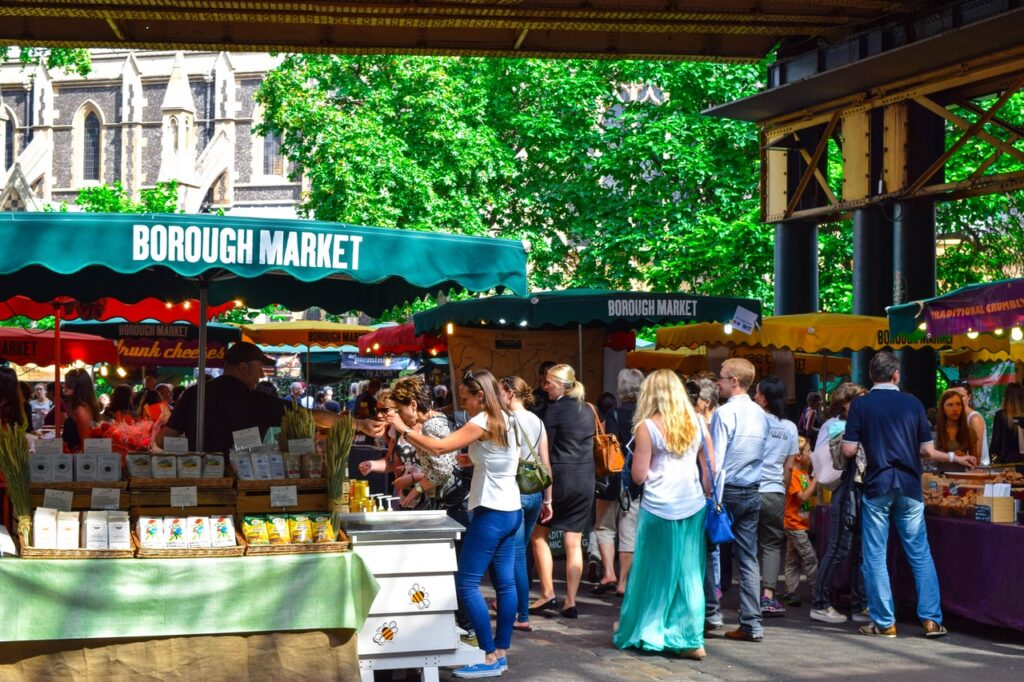
Tools for Harvesting and Handling Produce
As a farmer’s market regular, I know how crucial it is to have the right tools for harvesting and handling produce.
Without them, it’s easy to damage or bruise fruits and vegetables, making them unattractive to customers.
So, before heading to the market, make sure to have these essential tools in your Farmers’ Market Supplies Checklist:
1. Harvesting Knives
Harvesting knives are probably the most important tool for any farmer. A sharp, curved blade is perfect for picking fruits and vegetables without damaging the plant. Some of the popular harvesting knives include serrated and straight-edge knives and foldable pocket knives. When buying one, make sure to check the blade quality and level of sharpness.
2. Pruners
Pruners are lightweight, handheld tools used to trim and cut plants. They come in a variety of sizes, blade styles, and designs. They are perfect for harvesting herbs, flowers, and small vegetables, such as tomatoes, peppers, and eggplants. Always go for a sharp and durable pair to avoid damaging the plants.
3. Buckets and Bins
Once you’ve harvested your produce, you need something to store and transport them. Buckets and bins come in handy for this purpose. Plastic, galvanized, and canvas bins are popular choices. They are durable, washable, and easy to carry around. Make sure to clean and sanitize them before every use to avoid any contamination.
4. Gloves
Gloves may seem like an optional tool, but they are essential for your safety and hygiene. They protect your hands from thorns, dirt, pesticides, and other harmful substances.
Go for latex-free, breathable, and comfortable gloves. Wash them regularly and replace them when they start showing signs of wear and tear.
In summary, having the right tools for harvesting and handling produce is essential for any farmer’s market vendor.
Harvesting knives, pruners, buckets, and gloves are some of the must-have tools to make your farming experience more comfortable and efficient. Make sure to check the quality, durability, and cleanliness of your tools regularly.
Maintenance and Cleanup
Keeping your farmers’ market supplies in good condition not only helps ensure the safety of your customers but also helps to prolong the life of your equipment.
Proper maintenance and cleaning are essential for the longevity of your supplies and will allow you to avoid costly replacements.
In this section of the Farmers’ Market Supplies Checklist, we’ll cover some tips on maintenance and cleanup to help you keep your supplies in top shape.
- Clean regularly: It’s important to clean your supplies regularly to prevent dirt and grime buildup. Use a cloth and mild detergent to clean surfaces, such as tables and display units. A quick wipe-down after each market day is usually sufficient.
- Check for wear and tear: Regular inspections of your supplies, such as tents, tables, and chairs, can help you spot any wear and tear. Fixing a problem when it first occurs can save you from having to shell out more money on replacement costs later on.
- Store your supplies properly: When not in use, store your supplies in a dry, cool place to prevent moisture buildup and damage from pests. If you have tents or awnings, make sure they’re completely dry before storing to avoid mold and mildew growth.
- Keep your knives sharp: Sharp knives make for safer, easier cutting. Regularly sharpening your knives will not only help make your work easier but will also ensure that your customers receive high-quality products.
By following these maintenance and cleaning tips, you can help keep your farmers’ market supplies in top condition, ensuring the safety of your customers and the longevity of your equipment.

